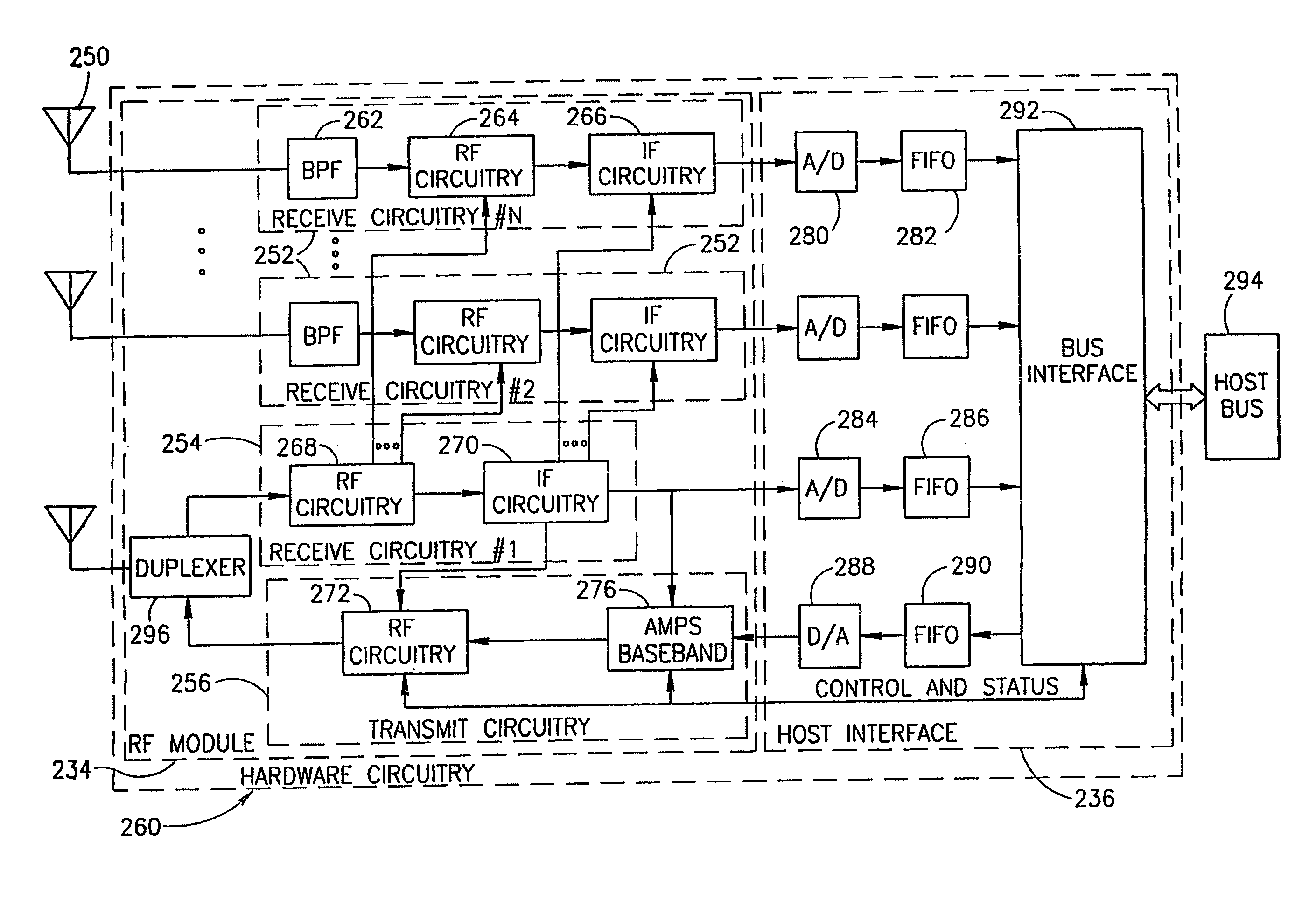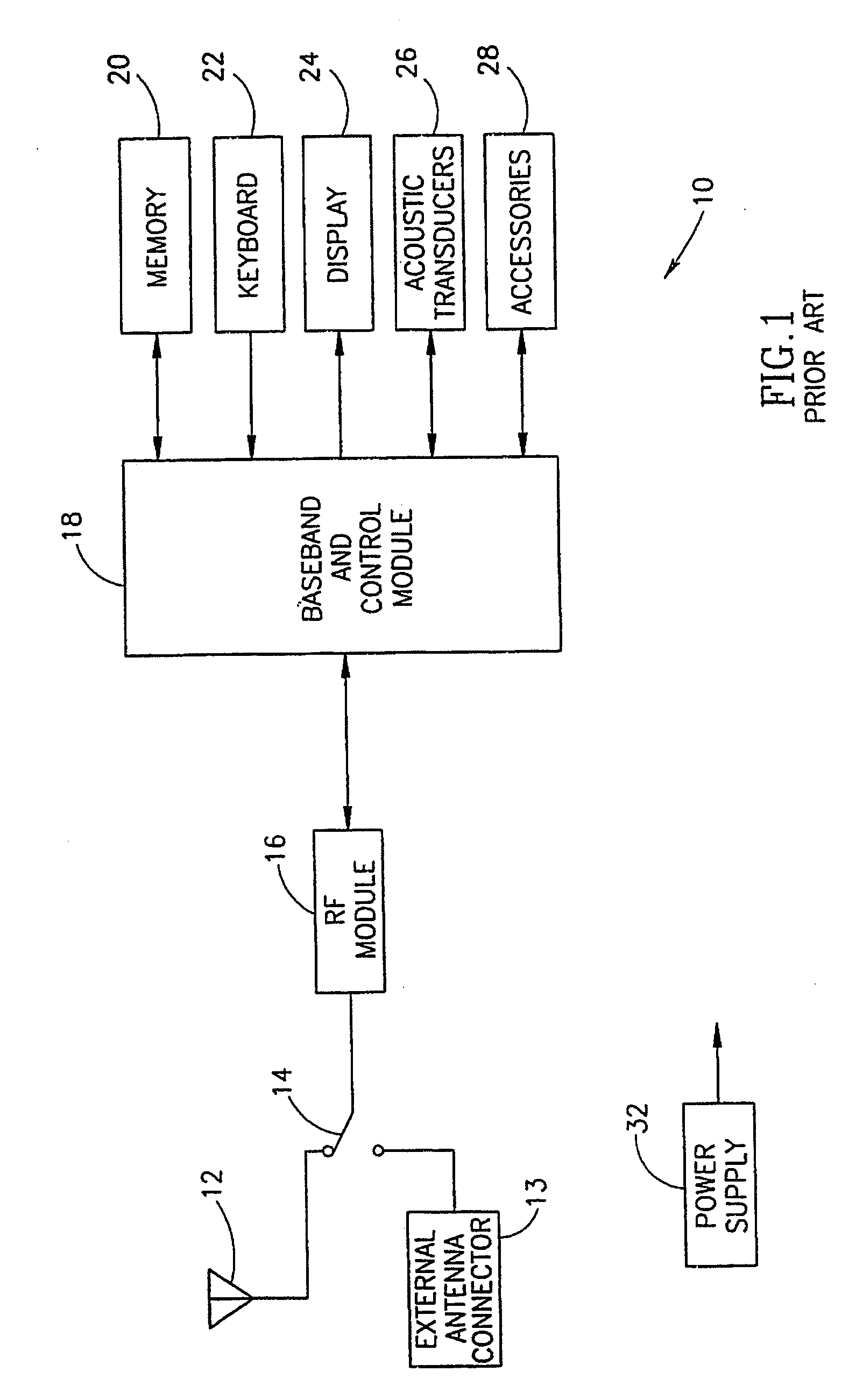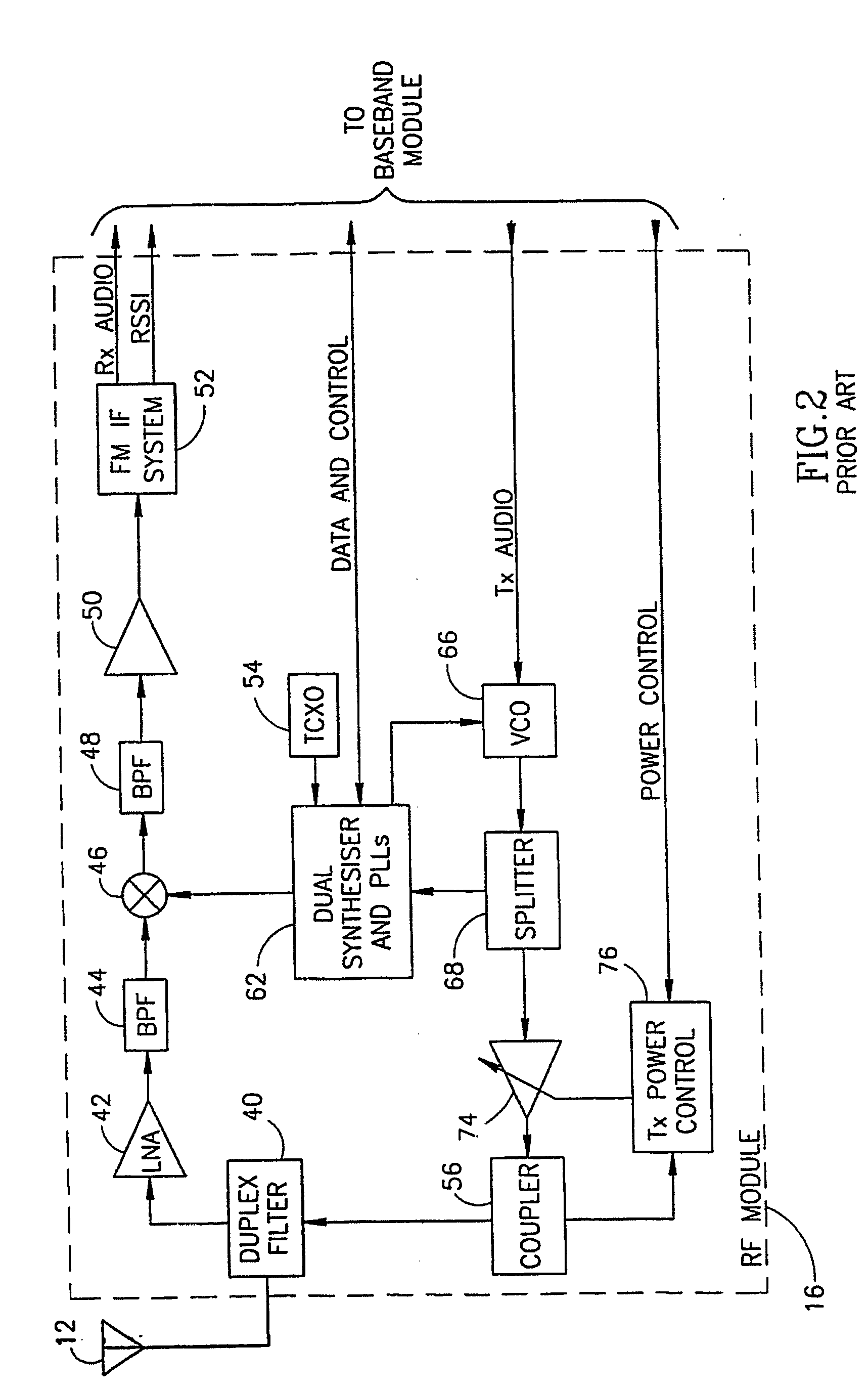Communication system utilizing host signal processing
a communication system and host signal technology, applied in the field of wireless communications systems, can solve the problems of increasing the power consumption of the device, using dedicated hardware, increasing the cost of the finished product, etc., and achieves the effects of reducing the amount of dedicated hardware, increasing the flexibility available in implementing, and facilitating upgradability
- Summary
- Abstract
- Description
- Claims
- Application Information
AI Technical Summary
Benefits of technology
Problems solved by technology
Method used
Image
Examples
first embodiment
[0074] A block diagram illustrating the elements of a cellular subscriber unit utilizing host signal processing and constructed in accordance with the present invention is shown in FIG. 4. The present invention is a cellular subscriber unit wherein most of the baseband tasks, services and signal processing are transferred to and carried out on the host system CPU. Transferring these functions to the host CPU provides power save capabilities, increases flexibility, reduces cost, simplifies upgrades, enhances the user interface (e.g., windows), etc. As shown in FIG. 4, the hardware requirements of the baseband portion is reduced to A / D and D / A converters 126, register bank and sequential logic unit 142 and bus interface 144.
[0075] The RF module 124 comprises interfaces for audio signals and other baseband analog signals. These signals are connected to the A / D and D / A converters 126 and to digital control lines that are latched by register bank 142. The RF module 124 implements the hig...
second embodiment
[0091] In the second embodiment shown in FIG. 6, a single converter is required each for the cellular receive and transmit signal paths. Note that in the case of baseband audio sampling only a V 0.34 grade codec is required for the A / D and D / A converters. The conversion of cellular control and status signals is handled by the control and signaling unit 182.
[0092] The bus interface 196 is optionally a low cost bus interface which provides only the control lines and the necessary circuitry for sampling operations to occur, since the controller is implemented in hardware.
[0093] A block diagram illustrating a telephony modem constructed in accordance with a third embodiment of the present invention which utilizes a cellular subscriber unit in combination with host signal processing is shown in FIG. 7. In this third embodiment, the cellular subscriber unit 210 is separated from the telephony modem 220 realized on the host computer 214. A host based software modem 220 receives and transm...
PUM
 Login to View More
Login to View More Abstract
Description
Claims
Application Information
 Login to View More
Login to View More - R&D
- Intellectual Property
- Life Sciences
- Materials
- Tech Scout
- Unparalleled Data Quality
- Higher Quality Content
- 60% Fewer Hallucinations
Browse by: Latest US Patents, China's latest patents, Technical Efficacy Thesaurus, Application Domain, Technology Topic, Popular Technical Reports.
© 2025 PatSnap. All rights reserved.Legal|Privacy policy|Modern Slavery Act Transparency Statement|Sitemap|About US| Contact US: help@patsnap.com



